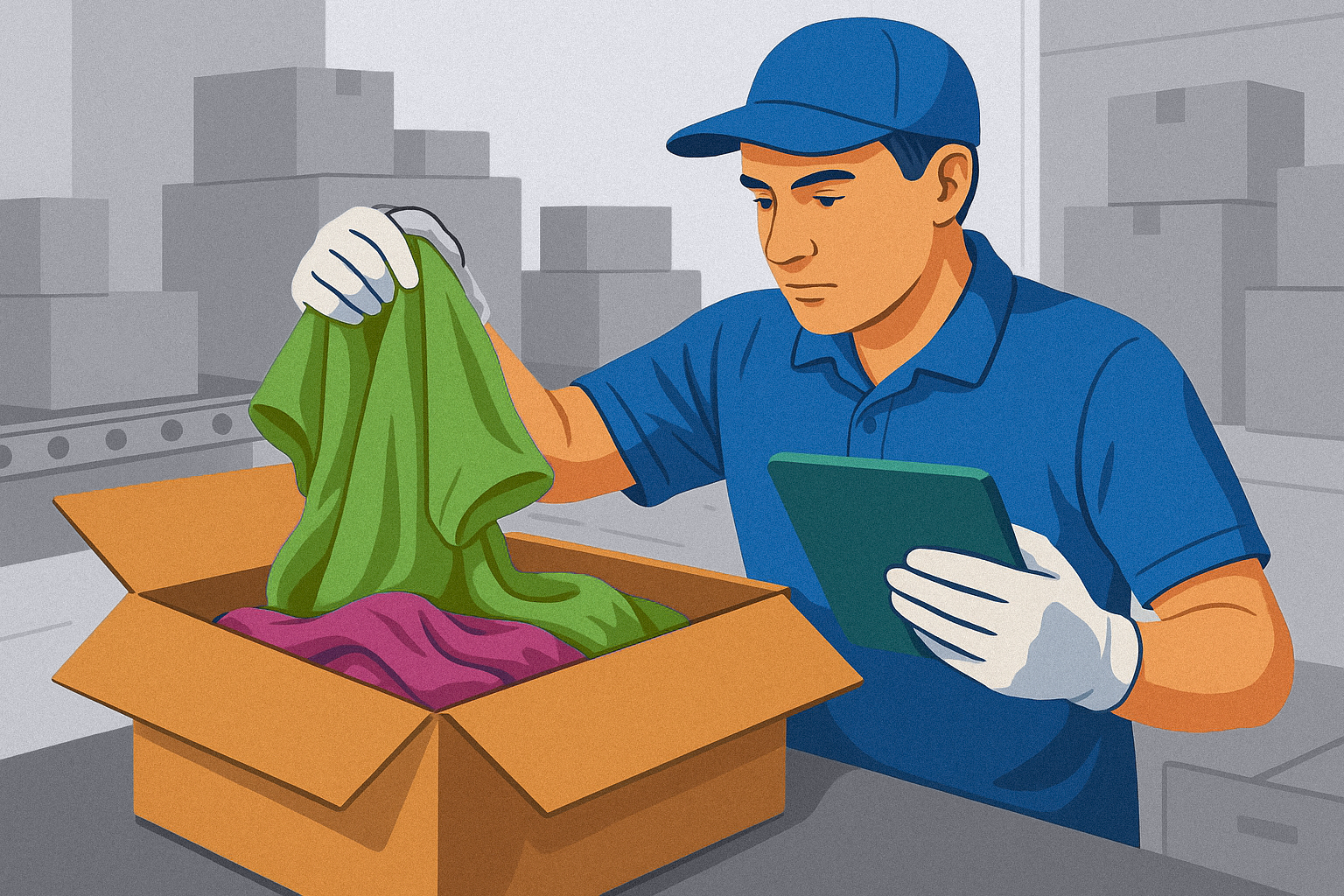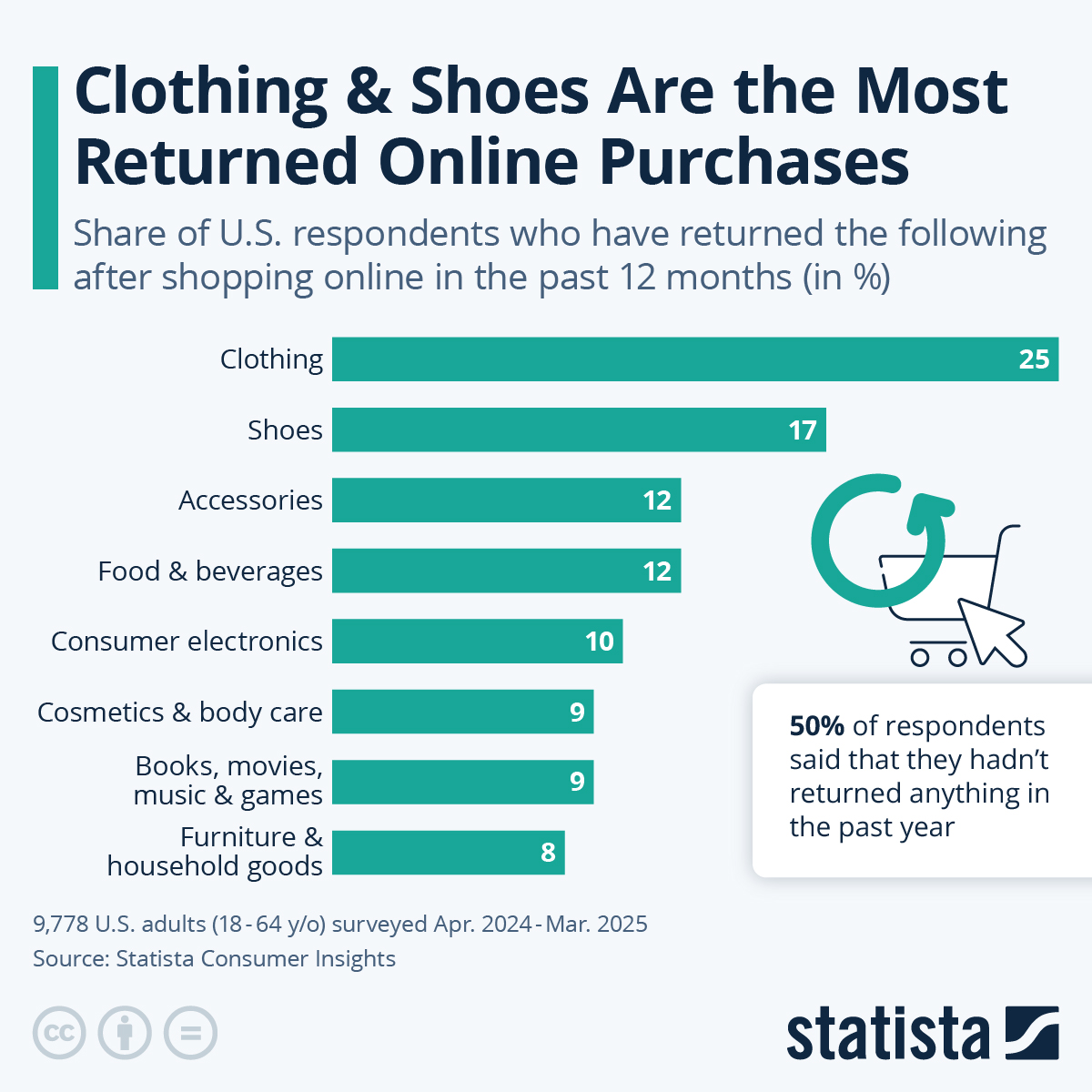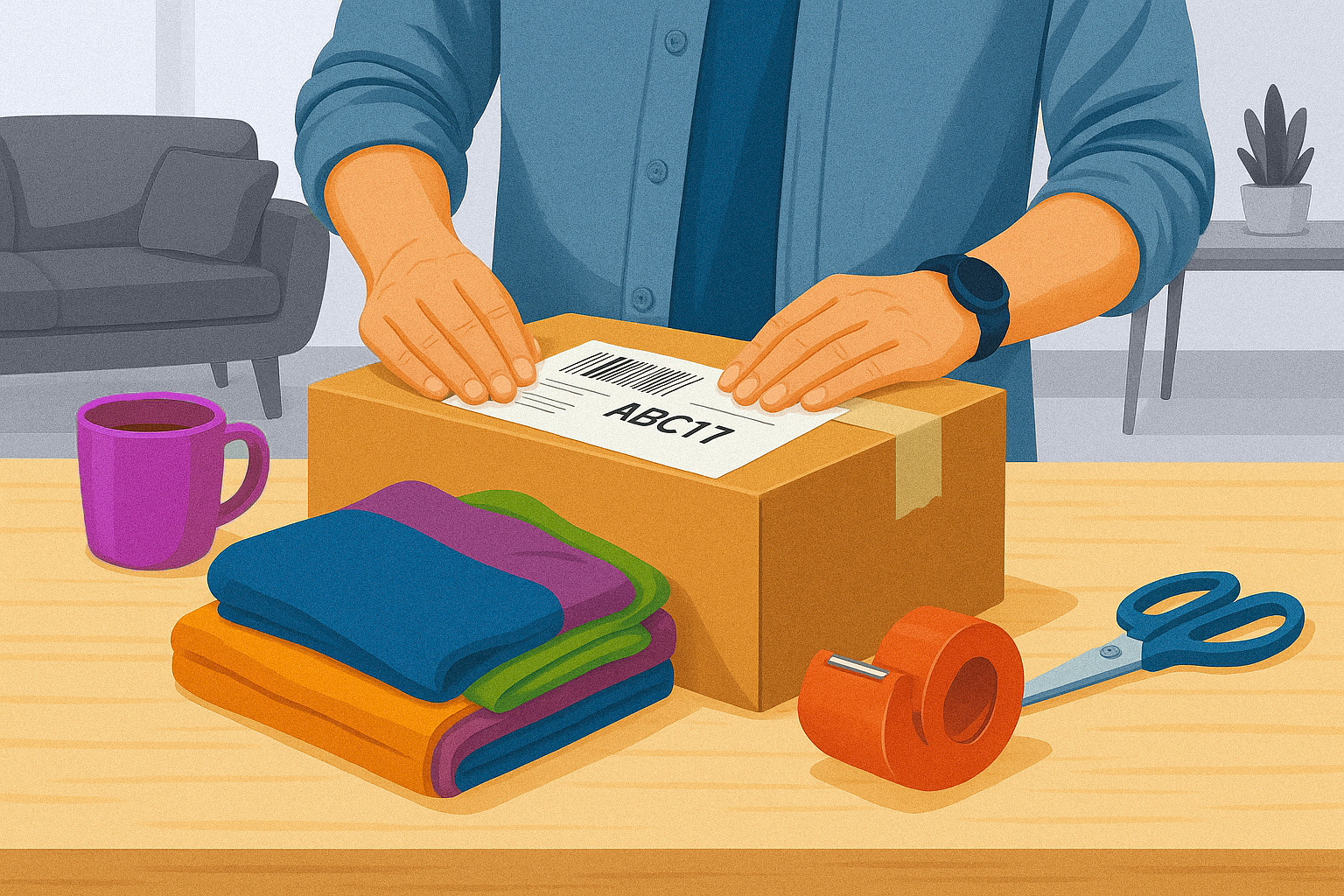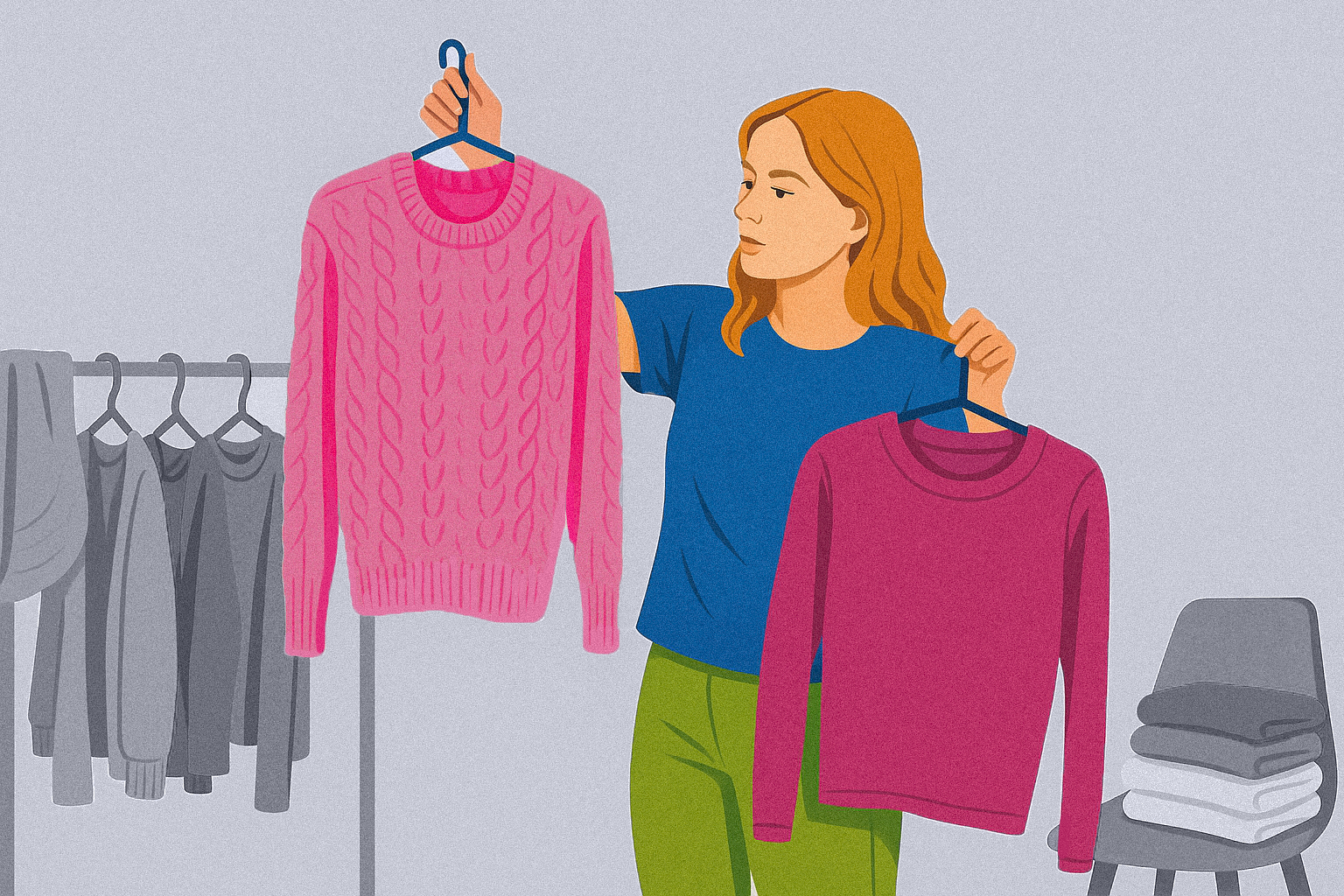Ecommerce returns are no longer a post–peak season headache—they’re a year-round pressure point that can quietly erase margins, especially in categories like apparel, footwear, beauty, and lifestyle. For many brands, returns have become a built-in part of the customer journey rather than an unfortunate exception. At Jay Group, we see this every day across fast-growing DTC and omnichannel brands. In this article, we’ll look at what’s really happening with ecommerce returns in 2025, what “normal” return rates look like, how to reduce avoidable returns, and how structured return management and reverse logistics can turn a cost center into a competitive advantage.
ECommerce Returns Optimization: Summary
Ecommerce returns aren’t just a post-holiday nuisance anymore—they’re a margin-eating force brands have to manage all year long. This article breaks down where returns really come from, why some categories are more “return-prone” than others, and why looking at one blended return rate hides the story you actually need to act on. It walks through how a clear, shopper-friendly – but fraud-aware—return policy can boost trust and conversion while keeping abuse in check. From there, it dives into what good reverse logistics looks like in real life: clean data, clear grading rules, faster return-to-stock, and smarter disposition decisions that recover more value. Along the way, we highlight how growing return volumes are projected to take an even bigger bite out of U.S. eCommerce revenue, and why brands can’t afford to treat returns as an afterthought. The article closes by showing how Jay Group partners with brands to turn returns from a black box into a data-rich, margin-protecting part of the customer journey.

What are e-commerce returns?
E-commerce returns are orders that customers send back after buying online—whether they ship them back, drop them off at a return location, or bring them into a store. Instead of the usual flow of goods (warehouse → customer), returns reverse that flow (customer → warehouse), triggering a series of steps: creating a return label or RMA, shipping the product back, receiving it in the warehouse, inspecting and grading it, deciding if it can be resold, and then issuing a refund, credit, or exchange.
In simple terms: an e-commerce return is everything that happens after a customer decides, “I’m not keeping this”—and how well brands handle that moment has a big impact on the margins, inventory health, and customer loyalty.
Returns In Ecommerce: Why They’re So Challenging
Returns have always existed—but ecommerce has amplified them. Online shoppers can’t touch, try, or compare items in person, so they compensate by ordering multiple sizes, colors, and styles with the intention of sending something back. Ecommerce return volumes are now roughly three times higher than physical retail returns, and many retailers use around 30% as a benchmark for online return rates in internal planning.
Ecommerce brands are in a difficult situation, returns are growing and eating margins, but at the same time:
- Customers expect flexible, low-friction returns.
- Brands carry the operational burden: transportation, processing, fraud risk, and lost margin.
- Returns spike after peak periods (Black Friday/Cyber Monday, holidays) and can stress warehouse labor, systems, and customer service.
A 2025 survey of 200 retailers found that while returns are stabilizing after the pandemic surge, they’re stabilizing at high levels—and fraud and abuse are now the single biggest pain point for 44% of brands.
The result: returns are no longer a back-office problem. They’re a strategic lever touching merchandising, UX, pricing, operations, and customer lifetime value.
Ecommerce Return Rates
There is no single “right” return rate. It varies by category, price point, and customer expectations. But several benchmarks are helpful:
- US retailers saw around $890B in merchandise returned in 2024, according to the National Retail Federation
- The average eCommerce return rate in the US was about 16.9% in 2024, according to Shopify, meaning nearly 17 out of 100 online purchases were sent back.
- Other analyses across verticals place the average ecommerce return rate around 18.1%, with online orders returning at roughly three times the rate of in-store purchases
- In apparel and footwear, returns are significantly higher. Online apparel return rates in the mid-20% range are common, and some reports show certain apparel and shoe segments seeing 30–40%+ return rates, especially during discount-heavy periods when shoppers “bracket” multiple sizes and styles.
Average Ecommerce Return Rates
While every brand’s data set is unique, the big-picture patterns are surprisingly consistent- and Statista’s latest consumer data backs that up.
Clothing and shoes clearly lead the pack: 25% of U.S. online shoppers returned clothing and 17% returned shoes in the past 12 months.
Accessories follow at 12%, alongside food & beverages (12%), with consumer electronics at 10%, cosmetics & body care at 9%, books, movies, music & games at 9%, and furniture & household goods at 8%.
In other words, fashion and style-driven categories are still the most return-heavy, while bulkier home items and everyday goods sit lower on the list.
For brands, the real unlock isn’t just knowing your overall (blended) return rate – it’s understanding how it breaks down. You want to segment returns by product category or collection, by acquisition channel or campaign, by customer cohort (new vs. repeat, VIP vs. one-time), and by reason code (fit, quality, damaged in transit, “changed my mind,” suspected fraud, etc.). That level of visibility is where integrated data across your order management system, WMS, and returns platform becomes critical—and where a 3PL like Jay Group can move from simply “processing labels” to surfacing real operational insights you can act on.

How To Reduce Returns In Ecommerce
Returns will never go to zero, but a significant percentage is preventable. The most successful brands treat “return reduction” as a cross-functional initiative. So, what can be done?
- Improve Product Fit And Expectations
- Accurate, detailed product pages: robust descriptions, true-to-life photos, and videos reduce “it didn’t look like the pictures” returns.
- Fit and sizing guidance: real-world fit notes (“runs small in the shoulders”), detailed size charts, and—where appropriate—3D/AI size recommendation tools can meaningfully cut fit-related returns, especially in apparel and footwear.
- Realistic expectations: for beauty, wellness, and lifestyle products, clear statements about expected timeframes, usage, and limitations reduce “didn’t meet expectations” returns.
- Tighten Quality Control
- Upstream inspections: catching defects at the factory or 3PL saves downstream returns. Many brands now use on-site inspections and sampling for key SKUs.
- Feedback loop from returns: reason codes and inspection outcomes should feed back to buying and sourcing teams so chronic issues are addressed at the source.
- Design Packaging For Protection And Resellability
- Protective, right-sized packaging reduces damage-related returns and improves the odds of reselling items as “new” rather than liquidating them at a deep discount.
- Use Policy Levers Strategically
Brands are increasingly experimenting with:
- Shorter return windows on certain categories or sale items
- Restocking or mail-in return fees, especially for low-margin items
- Incentives for exchanges or store credit vs. refunds
Major retailers like Macy’s, for example, now extend holiday return windows but charge a fee for some mail-in returns—reflecting a broader industry shift toward making generous policies more sustainable.
The goal isn’t to punish your best customers—it’s to discourage serial abusers and align policy costs with product economics.

Ecommerce Return Policy
When you sit down to actually create or refresh your return policy, start by balancing two realities: policy abuse is real. According to the survey “State of Returns: Revolutionizing Returns” and Statista in 2024, 42 percent of men lied about not receiving an online purchase. In comparison, 15 percent of women received an online purchase and lied about it. Over a third of men have lied about a purchase arriving damaged, while 16 percent of women did the same.
Your goal is a document that’s easy for shoppers to understand and hard for bad actors to exploit. In practice, that means clear language (not legalese), explicit windows (for example, “30 days from delivery”), precise condition requirements (unworn, tags attached, safety seals intact), multiple return channels where possible (mail-in, drop-off locations, or store returns), and transparency about which options are free and which carry a fee. It also means setting expectations around timing (“refunds processed within 3–5 business days after inspection”), giving customers visibility into status updates, and building in fraud-aware guardrails like tighter windows for high-risk categories, plus clear rules for final-sale or hygiene-sensitive items.
To move faster, brands can start with free templates and generators—such as Shopify’s Refund & Return Policy Generator, Terms Feed’s Return & Refund Policy Generator, or Website Policies’ Return & Refund Policy Template & Generator—and then adapt the language to their products, channels, and risk tolerance.
These tools are helpful for structure and wording, but they’re not a substitute for legal review. Once you’ve drafted a policy that feels right for your brand and your customers, have it reviewed by qualified legal counsel to ensure it aligns with applicable consumer protection, ecommerce, and data/privacy laws in the markets where you sell.
Return Management In Ecommerce
A strong policy is only half of the story; the operational backbone matters just as much.
Many brands still manage returns in-house – about 48% of surveyed retailers do so today – but as they scale, they often hit capacity and complexity limits.
Effective ecommerce return management typically includes:
- Pre-authorization & RMA creation
- Online portals that pre-capture reason codes, photos, and disposition rules (refund vs. store credit vs. exchange).
- Early fraud screening (e.g., flagging unusual behavior or repeated high-value returns).
- Inbound visibility and forecasting
- Using carrier and portal data to see what’s coming back before it hits the dock.
- Forecasting labor for peak post-holiday or post-promotion influxes.
- Dock-to-stock SOPs
- Scanning the return upon receipt and reconciling with the RMA and carrier events.
- Clear, documented SOPs by product type: what counts as “new,” “refurbish,” “liquidate,” or “dispose.”
- Regular audits to keep grading consistent and reduce leakage.
- Disposition and value recovery
- Prioritizing return-to-stock at full price whenever possible.
- Utilizing outlets, clearance, and recommerce channels for “like-new” inventory.
- Leveraging manufacturer credits or secondary markets for non-resellable items.
- Fraud detection and prevention
- Matching package weights and tracking to the RMA to catch “empty box” or label-switch scams.
- Moving toward refund-after-inspection workflows where appropriate, to reduce exposure to fraudulent returns.
The State of Retail Returns 2025 survey found that when brands work with a 3PL on returns, their top objectives are: reducing the cost of processing returns (59%), preventing fraud and increasing accuracy (57%), and improving the consumer experience with more convenient, faster resolutions (56%).
Reverse Logistics With Jay Group
Jay Group is built to support brands with return management, or as it also called reverse logistics. We are proud to be able to reduce the cost of processing returns, prevent fraud and increase accuracy (57%), and improve the consumer experience with more convenient, faster resolutions.
The outcome of Jay Group’s reverse logistics standard is a returns operation that feels seamless to your customer—but is engineered behind the scenes to protect your margins of the brands. According to Two Boxes, this is what strong 3PL alignment with your brand should look like when it comes to reverse logistics:
Here’s what “good” looks like:
-
Meet with your 3PL before peak to review staffing, volumes, and how your returns policy will be applied in practice.
-
Integrate your return portal and warehouse tools so both sides can track returns in real time and spot issues early.
-
Set clear expectations for grading and inspection, including how to handle suspected fraud. Share visuals and returns data with suppliers so you can fix root-cause defects faster—not just process them.
“The Jay Group team was proactive. We could actually have strategic conversations instead of firefighting,” Emily Olivieri (Nisolo) .
“I’m at the 3PL often. The best ideas come from walking the floor together. We talk about returns as much as outbound shipping. It’s not an afterthought”.
When your warehouse truly feels like an extension of your team, everything runs smoother—especially under peak pressure.
Reverse Logistics Services Jay Group Can Provide
While details are tailored to each client, a typical Jay Group reverse logistics program can include:
- Integrated returns receipt & inspection
- Returns flow into the same dual-coast network that handles your outbound orders, with clear SLAs for opening, inspecting, and dispositioning.
- Configurable inspection workflows by category (e.g., apparel vs. beauty vs. electronics accessories).
- Standardized grading and disposition rules
- “New / resell,” “like-new / outlet or recommerce,” “refurbish/repair,” “recycle or dispose” rules matched to your brand standards and resale strategy.
- Data capture at the item level—so you know which SKUs and lots are driving avoidable returns.
- Fraud-aware operations
- Process design that takes into account the most common fraud patterns retailers report today—label tampering, fraudulent tracking, decoy returns, and policy abuse.
- Coordination with your payments/fraud stack so operational findings (e.g., repeated abuses from a given account) inform front-end risk decisions.
- Value recovery at scale
- Faster return-to-stock for clean items to keep in-stock rates high and markdowns lower.
- Support for outlet, clearance, or recommerce flows where appropriate, to maximize net recovery on non-core inventory.
- Peak-season resilience
- Jay Group’s 7-day operations, late cut-offs, and dual-coast footprint are designed to handle large post-peak return waves without paralyzing your outbound capacity.
- Labor planning and forecasting informed by historical returns data and your promotional calendar.
Jay Group Advantages: Ecommerce returns and reverse logistics
For brands evaluating whether to keep returns in-house or partner with a 3PL, a few Jay Group advantages stand out:
- End-to-end omnichannel fulfillment and returns
One partner across DTC, marketplace, and wholesale flows, with integrated reporting on both shipments and returns.
- Dual-coast, 7-day operations
Faster time-to-stock for returned units, which directly improves availability and reduces the need for safety stock.
- Data-driven insights—not just processing
Returns data can be surfaced back to your merchandising, CX, and performance marketing teams:
Which SKUs, campaigns, or regions drive the highest return rates
Top reason codes by product family
Fraud and abuse patterns over time
- Reverse logistics expertise aligned with industry trends
Apparel and footwear brands in particular expect their fulfillment partners to be returns experts—not just outbound specialists. In the 2025 survey, 74% of these brands said it’s important or very important that their 3PL can process returns effectively, and nearly a third would end a 3PL relationship over poor returns operations.
Jay Group aligns with that expectation: returns and reverse logistics are treated as a core capability, not an afterthought.
- Custom programs for your brand, not generic workflows
Different categories need different policies: a sexual wellness brand, a clean beauty line, and a performance apparel label can’t all run the same returns playbook. Jay Group designs category-specific SOPs and data capture so your returns operation matches your brand promise and regulatory requirements.
Bringing It All Together on Reverse Logistics
Most fast-growing ecommerce brands now expect their 3PL to be a true partner in up-to-date reverse logistics.
According to Statista Market Insights, 8.9% of ecommerce market revenue in the United States will be returned to retailers in 2025. This share is forecast to grow by 3.2 percentage points by 2029, reaching 12.1% of total ecommerce revenue. That’s not something any brand can afford to overlook.
Jay Group helps ecommerce brands turn returns from a silent margin drain into an intelligent, data-rich part of the customer journey. Interested? Let’s talk about reverse logistics—and protect your margins.
FAQ: ECommerce Returns & Reverse Logistics
What is a “normal” ecommerce return rate?
There’s no single “right” number, but most benchmarks put overall ecommerce return rates in the high-teens as a share of orders. Some retailers use ~30% as an internal planning figure for online orders. Category matters a lot: apparel and footwear are typically far higher than replenishment or commodity products.
Why are apparel and footwear returns so high compared to other categories?
Fashion is heavily driven by fit, style, and “try-at-home” behavior. Customers order multiple sizes or colors, keep what works, and send the rest back. Sizing inconsistency across brands, differences in fabric/feel, and highly personal style preferences all push apparel and footwear return rates well above the ecommerce average.
Which categories tend to have mid-range and low return rates?
Mid-range categories include things like home goods, décor, and consumer electronics—where compatibility or expectation gaps drive returns, but not at fashion levels. Lower-return categories tend to be commodities and replenishment items (think: same coffee pods, same detergent) where customers know exactly what they’re getting and are less likely to send it back.
How can brands actually reduce their return rates?
You won’t eliminate returns, but you can attack the preventable ones. Key levers include:
-
Better size and fit guidance (charts, real-world fit notes, recommendation tools)
-
More accurate product content (photos, video, usage details, realistic claims)
-
Stronger quality control and supplier feedback loops
-
Packaging that protects products and makes them resellable
-
Thoughtful policy design that discourages abuse without punishing good customers
The common thread: use your returns data to understand what’s coming back and why, then fix those root causes upstream.
What makes a good ecommerce return policy?
A strong policy balances trust and profitability. Best-in-class policies are:
-
Clear – plain language, specific windows (“30 days from delivery”), simple condition rules
-
Transparent – which options are free vs. paid, how refunds vs. store credit work
-
Multi-channel – where possible, offer mail-in, drop-off, or store returns
-
Predictable – set expectations on timelines (“refunds within 3–5 business days after inspection”)
-
Fraud-aware – reasonable limits on wardrobing and abuse, clear rules for final-sale and hygiene-sensitive items
Templates and generators are a good starting point, but the final policy should be reviewed by legal and tuned to your risk tolerance and brand promise.
Where can brands get free return-policy templates?
You can jump-start drafting with free online generators such as:
-
Shopify’s Refund & Return Policy Generator
-
TermsFeed’s Return & Refund Policy Generator
-
WebsitePolicies’ Return & Refund Policy templates
These tools help with structure and wording. Then your team can customize the content and have it reviewed by legal counsel before publishing.
What is “reverse logistics” and how is it different from regular fulfillment?
Forward logistics is the classic flow: inventory moves from supplier → warehouse → customer.
Reverse logistics is everything that happens when the flow reverses: the customer sends items back, the 3PL or brand receives, inspects, grades, decides what to do with each unit (restock, refurbish, liquidate, dispose), and feeds data back into systems and suppliers.
Done well, reverse logistics:
-
Recovers more value from returned inventory
-
Reduces fraud and shrink
-
Improves inventory accuracy and availability
-
Generates insights for merchandising, CX, and marketing
What does “good” alignment with a 3PL on returns look like?
Strong alignment usually includes:
-
Pre-peak planning – meeting before major sales periods to align on volumes, staffing, and how the return policy will be applied on the floor
-
Integrated systems – connecting your return portal and the 3PL’s WMS so both sides see the same data in real time
-
Clear grading rules – documented, visual standards for what counts as new, like-new, refurbish, or scrap
-
Fraud playbooks – agreed-upon steps when something looks off (weight mismatches, label swaps, chronic abusers)
-
Regular reviews – looking at reason codes and inspection outcomes together and turning them into upstream fixes
In that model, the warehouse behaves like an extension of your team, not just a vendor that prints labels.
How does Jay Group specifically help with returns and reverse logistics?
Jay Group builds reverse logistics into the same dual-coast, 7-day network that handles outbound orders. That means:
-
Fast intake, inspection, and disposition of returned inventory
-
Standardized grading and reason-code capture at the item level
-
Operational controls that take common fraud patterns into account
-
Data your merchandising, CX, and finance teams can actually use
-
The ability to absorb post-peak return spikes without crippling forward fulfillment
In short, returns stop being a black hole and become a data-rich, margin-protecting part of the customer journey.
When should a brand consider changing 3PLs because of returns?
Returns are no longer a side issue, so persistent problems are a red flag. It may be time to rethink your 3PL if:
-
You have no visibility into what’s coming back or why
-
Return SLAs are consistently missed and customers are complaining
-
Fraud and shrink feel out of control
-
Returned inventory is slow to get back into sellable stock
-
Your 3PL can’t or won’t adjust processes to match your policy and risk profile
Modern brands increasingly expect their 3PL to be a partner in reverse logistics, not just a ship-and-store provider. If your operations and data aren’t keeping up with what you’re seeing in returns, that’s a signal to start a deeper conversation.

